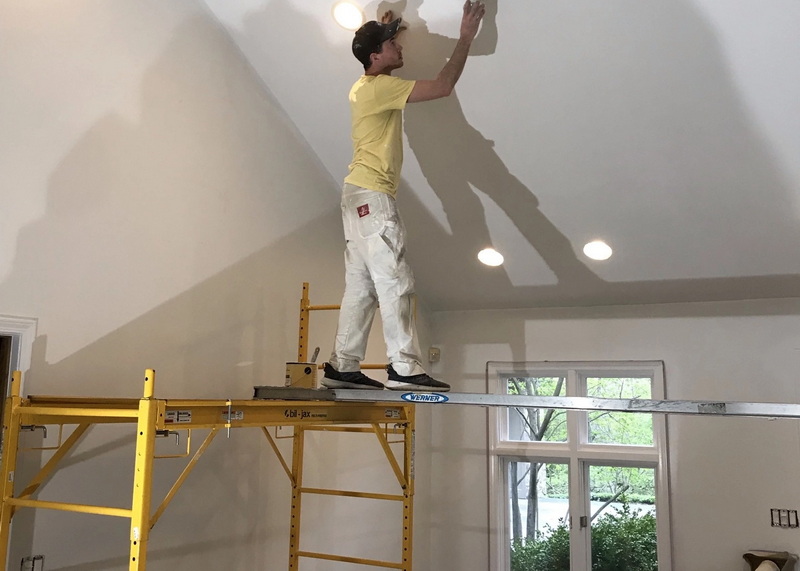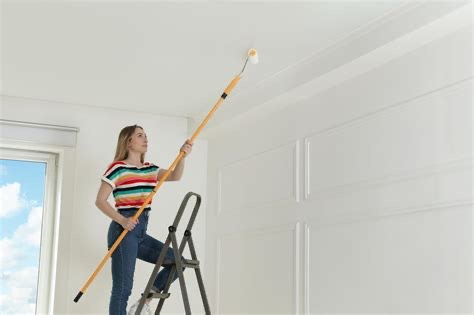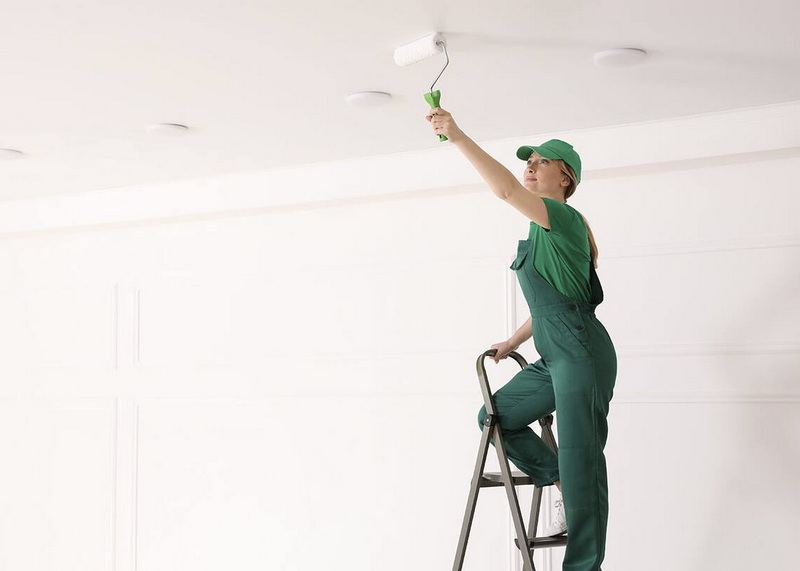Content Menu
● Introduction to Painting High Ceilings
● Safety Considerations
● Tools for Painting High Ceilings
● Example Tools and Their Uses
● Techniques for Painting High Ceilings
● Safety Tips
● Advanced Techniques for Complex Ceilings
● Handling Different Ceiling Types
● Choosing the Right Paint
● DIY vs. Professional Painting
● Benefits of Hiring Professionals
● Conclusion
● FAQ
>> 1. What are the safest tools for painting high ceilings without ladders?
>> 2. How do I ensure a smooth finish when using rollers on high ceilings?
>> 3. Can I use a small ladder if I still need extra height?
>> 4. How do I protect edges and trim when painting high ceilings?
>> 5. Are there any specific safety precautions I should take when painting high ceilings?
● Citations:
Painting high ceilings without ladders or scaffolding can be a challenging but achievable task with the right tools and techniques. This article will guide you through various methods, tools, and safety considerations to ensure a successful and safe painting experience.

Introduction to Painting High Ceilings
Painting high ceilings is often a daunting task due to the height involved. Traditional methods typically require ladders or scaffolding, which can be hazardous and cumbersome. However, with advancements in painting tools and techniques, it's now possible to paint high ceilings safely and efficiently without these traditional aids.
Safety Considerations
Before starting any painting project, safety should be your top priority. Ladders and scaffolding can pose significant risks, including falls and structural collapses. According to safety statistics, ladder-related accidents are common, with over 300 deaths and 500,000 injuries annually. Therefore, exploring alternative methods is crucial.
Tools for Painting High Ceilings
Several tools are essential for painting high ceilings without ladders or scaffolding:
1. Extension Poles: These are versatile and can be used with various attachments such as paintbrushes and rollers. Extension poles come in different lengths, allowing you to reach high areas safely from the ground.
2. Paint Edgers: These tools help in creating clean lines around edges and corners without needing to climb up close. They can be attached to extension poles for added reach.
3. Roller Frames and Covers: Large roller frames with extension poles can cover significant areas quickly. Ensure the roller covers are suitable for your paint type.
Example Tools and Their Uses
- The Original Wall Brush: This can be attached to an extension pole for cutting in and painting edges.
- Shur-Line Paint Edger Pro: Useful for precise edges and corners.
- Mr. LongArm Extension Pole: Offers extended reach for various painting tasks.
Techniques for Painting High Ceilings
Step-by-Step Guide:
1. Preparation:
- Move furniture away from the wall.
- Cover floors and furniture with drop cloths.
- Clean the ceiling to remove dust and dirt.
2. Taping:
- Use painter's tape to protect edges and trim.
3. Cutting In:
- Attach a paintbrush to an extension pole and use it for cutting in around edges and corners.
4. Rolling:
- Use a roller frame attached to an extension pole to paint the main areas of the ceiling.
5. Final Touches:
- Remove tape carefully to avoid pulling off paint.
- Touch up any mistakes.
Safety Tips
- Use Proper Equipment: Always ensure your extension poles and attachments are securely fastened.
- Work with a Partner: Having someone assist can help in case of emergencies.
- Maintain a Clean Workspace: Keep your workspace clear of clutter to prevent tripping hazards.

Advanced Techniques for Complex Ceilings
For ceilings with complex designs or multiple levels, additional techniques can be employed:
- Using Stencils: For intricate patterns, use stencils attached to extension poles to maintain precision.
- Layering Paint: For textured or popcorn ceilings, apply paint in thin layers to avoid drips.
Handling Different Ceiling Types
Different ceiling types require specific approaches:
- Popcorn Ceilings: Use a textured roller to match the ceiling's texture.
- Vaulted Ceilings: Use a combination of extension poles and specialized brushes for curved areas.
- Drop Ceilings: Remove tiles to access the area above, then use extension poles to paint.
Choosing the Right Paint
Selecting the right paint is crucial for achieving a professional finish:
- Latex vs. Oil-Based Paint: Latex paint is generally easier to clean up and dries faster.
- Sheen Levels: Choose a sheen that suits your ceiling type—flat for ceilings with imperfections, eggshell or satin for most ceilings.
DIY vs. Professional Painting
While DIY painting can be cost-effective, consider hiring professionals if:
- You are unsure about the safety aspects.
- The ceiling has complex designs or requires specialized techniques.
- You lack experience with high-ceiling painting.
Benefits of Hiring Professionals
- Safety Assurance: Professionals have the necessary safety equipment and experience.
- Quality Finish: Professionals can achieve a smoother, more even finish.
- Time-Saving: Hiring professionals saves you time and effort.
Conclusion
Painting high ceilings without ladders or scaffolding is not only possible but also safer and more efficient with the right tools and techniques. By following the steps outlined and using the recommended tools, you can achieve professional results while minimizing risks. Remember, safety should always be your top priority when undertaking any painting project.

FAQ
1. What are the safest tools for painting high ceilings without ladders?
The safest tools include extension poles with paintbrush or roller attachments, and paint edgers. These allow you to work from the ground, reducing the risk of falls.
2. How do I ensure a smooth finish when using rollers on high ceilings?
To ensure a smooth finish, use high-quality roller covers that are suitable for your paint type. Also, maintain consistent pressure and overlap your strokes slightly.
3. Can I use a small ladder if I still need extra height?
Yes, you can use a small ladder, like a two-step ladder, in conjunction with an extension pole if needed. However, always ensure the ladder is stable and secure.
4. How do I protect edges and trim when painting high ceilings?
Use painter's tape to protect edges and trim. Apply the tape carefully to ensure it adheres well and remove it slowly after painting to avoid pulling off paint.
5. Are there any specific safety precautions I should take when painting high ceilings?
Always work with a partner, keep your workspace clean, and ensure all equipment is securely fastened. Additionally, maintain a safe distance from power lines if painting near them.
Citations:
[1] https://www.youtube.com/watch?v=HginRVeU89M
[2] https://www.sohu.com/a/229746319_498025
[3] https://www.youtube.com/watch?v=XjaWqBfrw8Q
[4] https://www.sohu.com/a/243591364_642305
[5] https://www.itallstartedwithpaint.com/mission-possibility-how-to-paint/
[6] https://www.sohu.com/a/480610274_121088816
[7] https://www.youtube.com/watch?v=Hb0s52mfuks
[8] https://www.sohu.com/a/447462460_711750






















